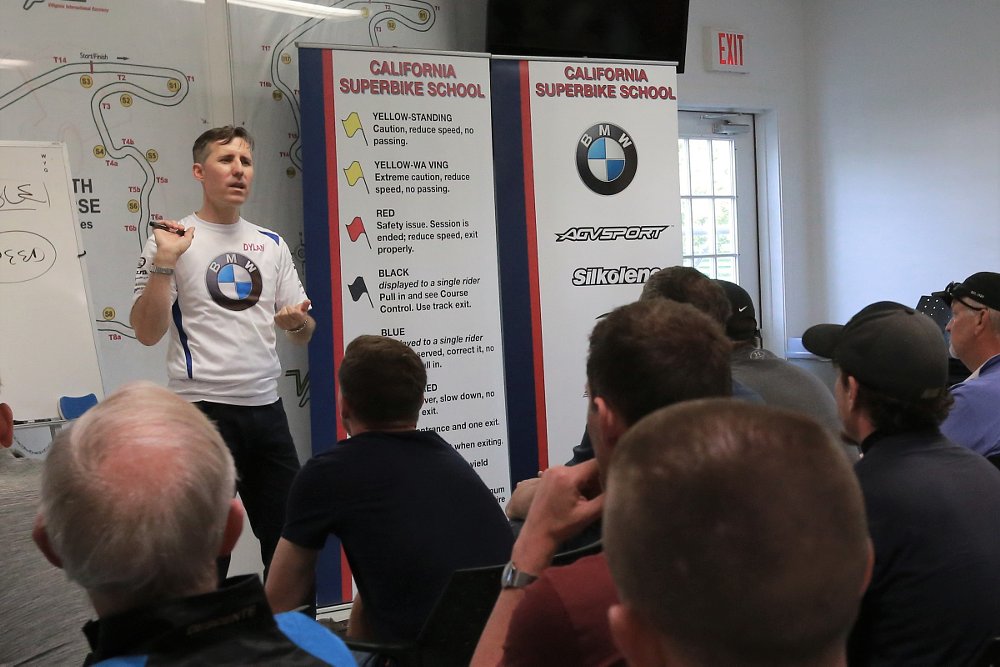Skill progression, as we know, is different for every rider. A small percentage improve almost instantly. Most take time. Then we have another small percentage who just don’t seem to make much progress at all; that’s who I’d like to talk about here.
At the California Superbike School we have a saying: "There are no inferior riders, only inferior coaches." It’s easier to dismiss a rider as incompetent than to see oneself as a poor coach. Over the years we’ve seen some riders who had fantastic aptitude and also those who were the exact opposite. To a motorcycle trainer, the "hopeless rider" is a fascinating puzzle that puts the instructor to the test. We have had numerous truly impressive successes with "hopeless riders." They all had a common theme and outcome on their journeys to becoming better riders.
Editor's note: Dylan Code is a rider coach and the COO (stands for child of owner) of the California Superbike School, with 23 years of full-time experience in the area of rider training. He works closely with his father, Keith Code, on curriculum development and figuring out how to provide the best possible motorcycle riding experience for their students.
Case #1: The foreign executive
This person flew from overseas to attend our school. He had aspirations to eventually go racing but rode at a pace equivalent to the beginner group at a track day. He continued to return multiple times and with each visit would improve, but only slightly. His tenacity was admirable, but the goal to go racing seemed so far off.
This continued for several schools, showing up, a sliver of improvement, back again, another slightly larger sliver of improvement, back again, etc. Then we started to see larger steps, then larger steps, and suddenly he was legitimately fast, smooth, in control and did achieve his goal to go club racing.

Case #2: The risk-averse small-town business owner
This rider described himself as "terrible at all sports" in school, the typical "spectator in the bleachers" with no natural aptitude, and apparently that included riding motorcycles. He originally came to our school improve his skills and have a safe track experience. He was quite shaky at first, showing only the slightest improvement. He progressed to riding track days in the beginner group, then took more training with us and finally progressed to the intermediate group at track days.
At this point, his lap times hit a plateau, mainly because he is admittedly risk-averse. He did not care about speed so much as "getting the technique right." Then, after more time focusing on technical perfection, the speed came naturally and considerably. Now he is riding track days in the fast group, outpacing most of the control riders. He has more than 100 days training with us, with no crashes.
As he put it: "After a lifetime being below average, for once in my life, I’m above average at a sport."

Case #3: Big to small
Like the others, this rider also started out slow and shaky, but kept returning. Additionally he was carrying 100 pounds extra weight. From time to time I would get on our little BMW G 310 and ride with the students. He was riding one of our BMW S 1000 RRs but I would end up lapping him during a session. He did more training and got a little better to the point where I was not lapping him. The next season, he could keep me in sight.

During this time, driven by a desire to be a better rider, he was steadily losing weight. Now, three years later and 100 pounds lighter, he rides with good technique, has zero crashes and is in control and fast enough to go racing if he wanted.
What made the difference?
These three riders had a few things in common. They were all very slow, cautious and shaky to start, made slight progress to begin with, kept returning and focusing on technique, then found themselves at or near the top of their classes. I believe the key to overcoming ineptitude is deliberate practice, which is quite different from regular practice. Deliberate practice means practicing with a clear awareness of the specific components of a skill we’re aiming to improve and exactly how to improve them.
Miles in the saddle help but are no guarantee. A clear lesson plan with focused and known objectives can overcome barriers to improvement. Different riders require different programs. What worked for the last rider won’t necessarily work for the next one. Seeking out professional coaching with individual attention and a follow up plan can move riders towards their goals.
To summarize, work on the technique piece by piece, and the speed will come — as well as the safety.
For those who can’t get professional training due to location or resources, there are books by reputable motorcycle authors. One could pick a chapter covering a particular skill, read it, and make that the focus for your next ride. From there, each ride becomes a game of personal development.
I always say riding well is fun, but getting better is thrilling.












